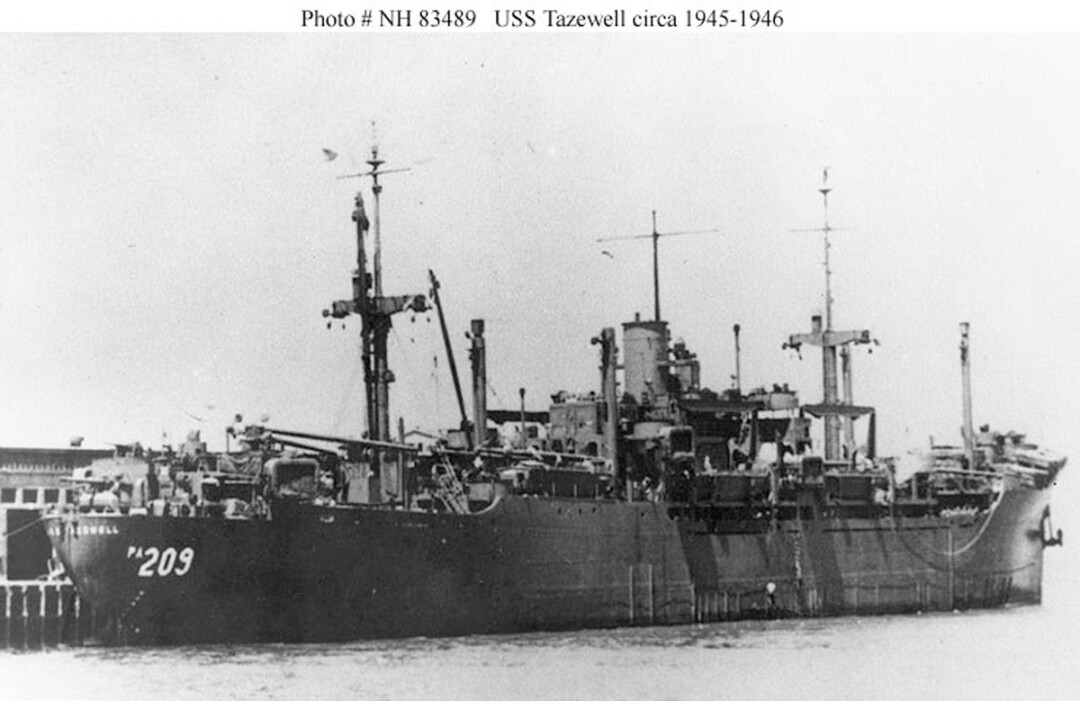That’s Not What I Was There For: Ray Lau’s Story
Rachel Phillips | Wednesday Nov. 1st, 2017
Since World War I, Montanans have been known for their military service. In honor of Veterans Day, I wanted to share some of Ray Lau’s experiences. Lau is a local Three Forks resident who grew up in Southwest Montana and served in the Pacific theater during World War II. I recently had the privilege of interviewing Ray at the Gallatin History Museum.
Ray Lau was a fifteen-year-old kid, growing up on his family’s ranch outside of Harrison and Pony, Montana, when Pearl Harbor was attacked and the United States entered World War II. Just a couple of years later, he watched many of his classmates at Pony High School enlist in the military. “In my junior year, there were six of us boys in the class. Four of them had already joined the service. My mom said, ‘You will not join the service until you finish high school.’ And that, later turned out that was real good advice.”
Ray spent his childhood outdoors, riding horses and helping his father on the family ranch. Ray’s parents were focused on education. To this day, he remembers his father’s dedication in making sure Ray and his siblings attended school regularly. “We had two teams of horses on the ranch, he [Ray’s father] would take one team, take us kids to town. He would leave that team there. And then he would walk back to the ranch, take the other team, and work all day. Come time for school to be out…the wagon was all ready to take us back home.” To fill up some extra time during his senior year at Pony High School, Ray took classes in bookkeeping and typing—skills that would prove beneficial to him during his military service.
Interested in becoming a pilot, Ray tried to enlist in the Navy Air Corps. He underwent rigorous tests, including one in which “they spun you around in a machine and then you got up and walked off.” To the disbelief of those in observance, Ray walked a perfectly straight line—twice. Despite passing his preliminary Navy Air Corps tests “with flying colors,” Ray turned eighteen and was drafted almost immediately into the Navy, before he had the chance to join the Air Corps.
He completed an accelerated five-week training boot camp in Farragut, Idaho, with his fellows in Company 549. After Farragut, Lau was transferred to San Francisco where he awaited the completion of his assigned ship—the brand new USS Tazewell. He didn’t have to wait long. Construction on the Tazewell began in June, 1944, and the crew was onboard by September. Because he was a member of the new ship’s original crew, Ray was a “plank owner.” As he explained, “If you were the original ship crew, a plank was yours.” Laughingly, Ray remembers that when he left the ship after completing his service, he requested his “plank,” but was denied the memento.

Onboard the Tazewell, Ray was assigned to deck duties—a job which he did not particularly relish. An opening appeared for a position in the supply department, and thanks to Ray’s high school bookkeeping and typing classes, he got the job. From there he obtained a position in the ship’s store. As Ray describes it: “Ship’s store is where you had candy, cigarettes, toiletries and all of that kind of stuff. Well if you got ship’s store, everybody onboard ship was your friend.” Not surprisingly, Ray became familiar with most everyone on the ship, including the Captain, who had a penchant for pipes.
Ray remembers one day when the Captain came to the ship’s store and said “‘Lau, you got any of them two bit pipes you sell for fifty cents?’ And I looked him right square in the eye and I said, ‘No, sir, but I sure have a deal for you.’ He [the Captain] said ‘What’s that?’ I said, ‘I got a fifty cent pipe that I’ll sell you for $1.00.’ And then it dawned on me, here’s an enlisted man talking to the Captain of the ship and to this day I don’t remember whether he bought his pipe or I gave him the pipe, I couldn’t tell you. But I got so shook up after, you know. An enlisted man, you don’t do that to an officer.”
During combat situations, all regular duties ceased. When the Tazewell was under attack, Ray Lau worked his assigned post as a first loader on one of the ship’s twin 40 mm guns. During one battle, Ray kept loading shells until suddenly, the gun quit firing. In his haste to fix the gun, Ray jammed his finger in the machinery. Eventually, a petty officer sent him to first aid, where they had to remove his damaged fingernail. Ray recalled “they said they were short of morphine and said ‘Do you think you can take it, we can take it off without giving you morphine?’ And of course, young guy and all full of stamina, you know, ‘Oh sure, go ahead.’ Well it took six of them to hold me down but they took the fingernail off. And anyway, they got it all through, got bandaged up. Then in the meantime, the guns were firing, and the doctor said ‘you want to stay in sickbay you can if you wanna or you wanna go back on the gun?’ I said, ‘…I don’t wanna stay here, I gotta get back where I belong.’ So I went back up, and was able to take my job over again as the first loader.”
The USS Tazewell arrived at Hiroshima just weeks after the city was hit by the atomic bomb. Ray remembers the devastation he saw there, and the resilience of the Japanese people living in the destroyed area. “We were there three weeks or a month after they dropped the bomb. Everything flat, burnt to a crisp, and you didn’t even want to breathe, the smell was horrible…during the middle of all of this was a shrine…I don’t know what it was…In the middle, out there standing all by itself, not a burn or scratch mark on it.”
After his discharge from the Navy in June of 1946, Ray returned to Montana. He joined his mother and siblings in Trident, where he met his future wife. Ray began a thirty-seven-year career with the Ideal Cement Company in Trident, and has fond memories of the town and the people who lived there. Ray moved up the ranks at the Cement Company, starting off as a laborer and retiring as a maintenance foreman. He was on duty that frightening night of August 17, 1959, when the massive earthquake rocked the Hebgen Lake area. Ray remembers that he had just gone down to a tunnel under some silos to check on something when the shaking started. “I felt like I was dizzy, and I thought, ‘Gee whiz, what the heck’s going on,’ and so I reached over and grabbed a piece of iron bar or something…and then I got to watching the…rooms off to the side and they had metal doors on them, and this one door was collapsing just like an accordion…Well then I realized, ‘You dummy, it’s an earthquake.’…it was so darn dusty I couldn’t even get out. And when I went back out…it was recorded on the panel there—11:37.”
Ray’s ship, the USS Tazewell, was decommissioned in December, 1946. The 450-foot-long vessel was eventually sold for scrap in 1972. Now living in Three Forks, Ray is well known for his work with the local VFW and for improving the park on Main Street, which honors service men and women from all military branches. Ray himself carved the yellow wooden ribbons seen there. Ray and his wife, Jean, were involved with the Boy Scouts for many years, overseeing camping trips and teaching both youth and adults in the Scout program. Ray and Jean were both recipients of the Silver Beaver award, the highest award that a Boy Scout council can bestow on an individual. Ray now enjoys visiting with his friends and neighbors at the Iron Horse Cafe in Three Forks, where his regular table is affectionately called “Ray’s Office.”
Several years ago, Ray Lau had the chance to participate in an Honor Flight to Washington D.C., where he was welcomed with open arms. Much to his delight, a four-year-old boy shook his hand, and then gave him a hug.
As I was talking with Ray, I was struck not only by these touching stories, but by his kindness and humility. He came to our interview at the Gallatin History Museum with several treasures, among them medals that he hadn’t showed to anyone before. In his words: “that’s not what I was there for.”
You can hear and read more of Ray Lau’s story at the Gallatin History Museum. Special thanks to Kelly Hartman and Cindy Shearer for assistance with this article and interview. Visit the Gallatin History Museum at 317 W Main Street in Bozeman, www.gallatinhistorymuseum.org, or on Facebook.
| Tweet |
